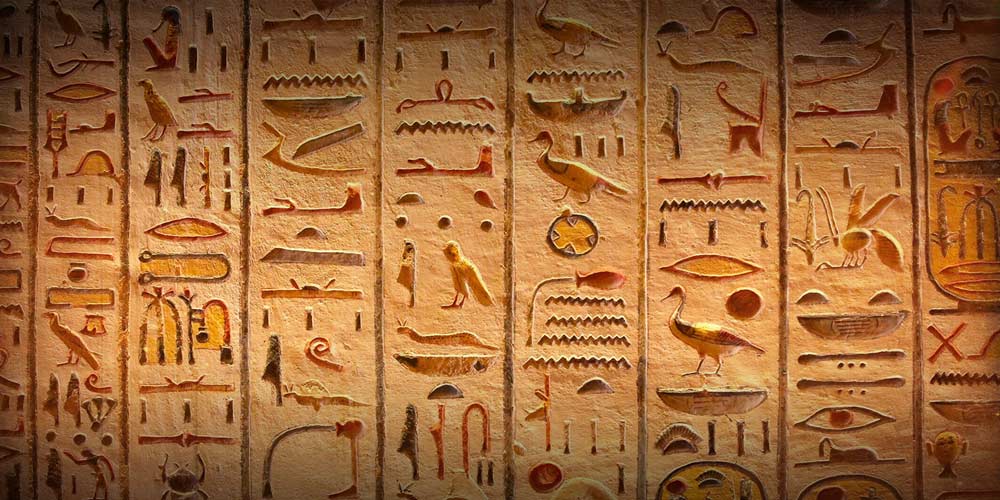Hieroglyphs

Table of contents
The hieroglyphic writing is one of the oldest systems of writing, as it dates back to the time period (3200 to 4000 BC), it appeared in an official manuscript and was used to record events on the walls of temples, tombs, and statues.
Definition of hieroglyphs
Hieroglyphs are picture symbols from nature that the ancient Egyptians used for writing, as they are pictures of existing animals and creatures, parts thereof, or tools. The hieroglyphic writing remained unknown and many people could not explain it until 1822, when the Rosetta Stone was decoded during the reign of Champollion, the hieroglyphic writing was combined with demotic symbols and was called (the Coptic language). Many Egyptians wanted to learn the hieroglyphic writing in order to know more about the history of Egypt and to know their origin and civilization.
Egyptians words inherited from hieroglyphs
There are many words used by the current Egyptians that are taken from the ancient Egyptians and the hieroglyphs, they are used now, such as (Mamm) which denotes food, (Embu) which denotes drinking, (ta ta) meaning walk, (Boogeyman) which is taken from the name of an ancient Egyptian goblin used to scare children called “Bo Bo”, (slipper) which means the foot scale and its origin is “seb swept”, (Medames) means burying the beans in the soil until they are ripe and turned into Medames which means beans that are cooked in the oven, (No No) which means little child, (Makah Kah) means the old man who is unable to move, and (Batah) means hitting the head, in addition to different words such as (Tanash) which indicates lack of response, (Yama) which means a lot, (Khum) which means lie or deception, (Maqhur) which means the sad person and (Sett) which means woman.
History of Hieroglyphs
The letters of the hieroglyphic writing are miniature images, some of which indicate sounds in the Egyptian language, they were found frequently on the walls of the royal tombs in Abydos and on the walls of temples and tombs, the letters were complex in writing, so different languages appeared such as hieratic and demotic writing, which were used to write on papyrus, daily documents, and various books due to the difficulty of the hieroglyphic writing. The hieratic and demotic languages were combined with the hieroglyphs and used by the Copts, it was called the Coptic language in Egypt.
The hieroglyphic writing was distinguished by the fact that it does not contain quotation marks and punctuation, which made it more difficult to read and learn it, as it is difficult to distinguish words and sentences, it is also possible to write it from left to right or vice versa, vertically or horizontally, few people were able to read it, including priests. Throughout the ages, the use of the hieroglyphic writing decreased until it completely disappeared, as it was replaced by the Egyptian language for ease of reading, the situation remained like this until the discovery of a large stone slab during the restoration of a fort in the city of Rosetta (Rosetta Stone) in 1799, a text was engraved on it in three languages: hieroglyphics, demotic, and ancient Greek. After deciphering the symbols, scholars were able to decipher the hieroglyphic language in 1822, but until now many specialized scholars are still facing difficulty in reading and interpreting many texts.





